Marketing is essential for businesses to succeed in today’s competitive world.
It helps companies to reach their target audience and convince them to buy their products or services.
Effective marketing strategies can make or break a business, making it a crucial part of any organization’s success.
With that said, we have collected some important marketing statistics for 2024. Let’s take a look…
2024 Marketing Stats
67% of small business owners and marketers use AI for content marketing or SEO.
43% of small business owners are planning to invest more resources into their website’s performance in 2024.
36% of marketers use AI chatbots for various day-to-day tasks.
58% of B2B marketers reported increased sales and revenue in 2023 thanks to content marketing.
41% of marketers say email is their most effective marketing tool.
89% of customers want to see more videos from brands in 2024.
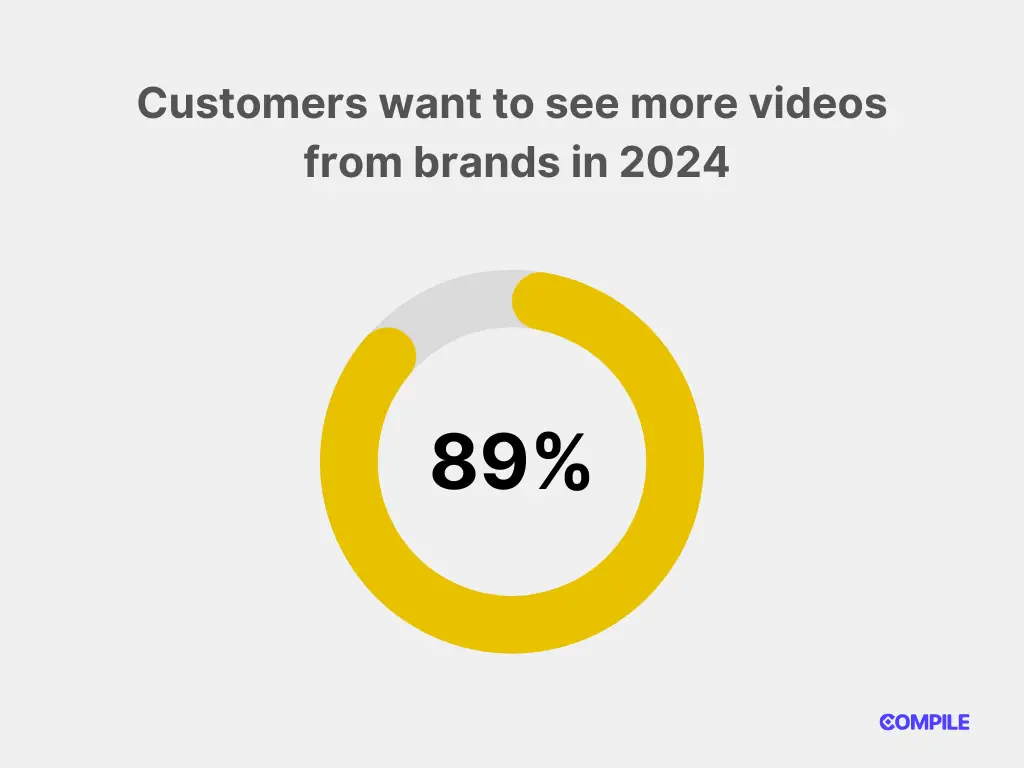
For 66% of businesses using AI, traffic is one of the key content marketing performance metrics.
More than one in three marketing leaders cite conversion rates as a top KPI that they prioritize tracking.
The average website has a bounce rate of 37% and an SEO click-through rate of 13%.
The average conversion rate across all e-commerce sites is under 2%.
13% of marketers are leveraging voice search optimization (Alexa, Siri, etc.) as part of their marketing strategy.
Google accounts for over 95% of global mobile search market share.
Younger users prefer mobile search to desktop, with 80% of Gen Z and 62% of millennials reporting primarily using mobile search.
E-commerce accounts for over 20% of all global retail sales.
Blog posts are the most famous content format, with 9 out of 10 marketers using their blogs to achieve their content goals.
29% of marketers actively use content marketing.
43% of content marketers report using AI to help them generate ideas (43%), but just 3% use it to write entire articles.
56% of marketers reported that short-form video was the top trend they planned to invest in in 2024.
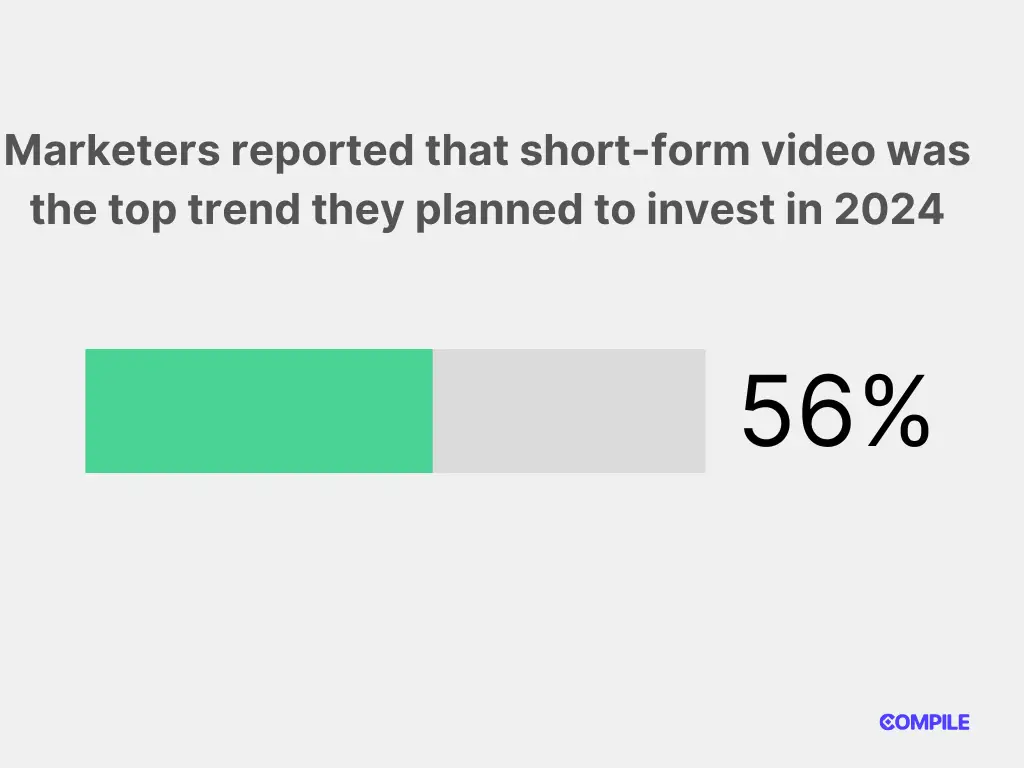
73% of consumers prefer to watch a short-form video to learn about a product or service.
Around 51% of consumers rely on product videos to make an educated purchase decision.
22% of marketers have incorporated YouTube Stories into their video marketing strategy.
Marketers report that the top social media platform for sharing videos is YouTube (70%), followed by Instagram (60%) and TikTok (35%).
The number of global email users reached 4.26 billion in 2022 and is projected to grow to 4.73 billion by 2026.
22% of marketers send two or three marketing emails per day, and 21% send daily emails.
64% of marketers personalize their emails by segment.
70% of marketers would rate their leads as being “high quality.”.
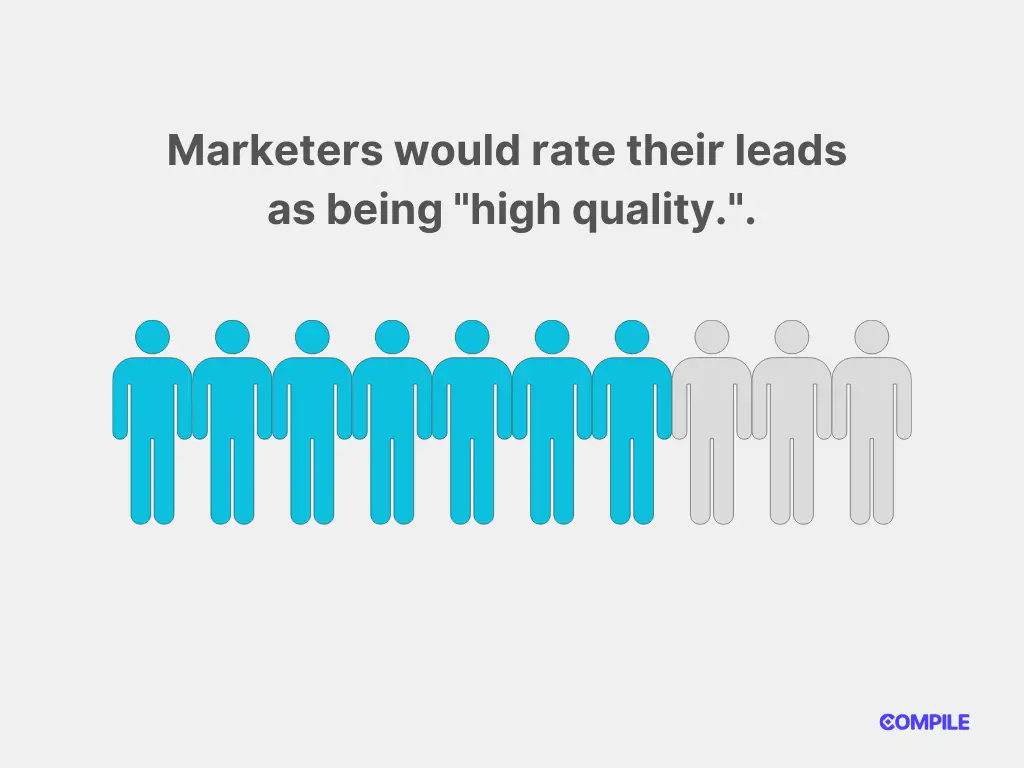
63% of marketing leaders report that they use automation in their email marketing efforts, 50% use it for social media management, and 40% automate their paid ads efforts.
Marketers report that their emails achieve the highest engagement rates between 9 AM and noon.
Using customers’ names in email copy is the most common strategy marketers use to personalize their marketing emails.
91% of marketers reported that demand for automation from their business teams increased between 2020 and 2022.
87% of marketers report that data is their company’s most under-utilized asset.
43% of marketers who use generative AI say that it’s most helpful for creating email copy.
Just over half (53%) of marketing decisions are influenced by marketing analytics.
A majority of marketers say that data is only “somewhat” important to their overall marketing strategies.
26% of marketers report that decision-makers do not review the information the marketing analytics team provides, and 24% report that decision-makers reject the marketing analytics team’s recommendations or rely on gut instincts to make decisions.
Global mobile advertising spending is expected to exceed $300 billion by 2024.
78% of marketers report that subscriber segmentation is the most effective strategy they use for email marketing campaigns.
The U.S. leads the world in mobile ad spending, with an annual spend of over $150 billion.
A personalized landing page can make PPC ad campaigns 5% more effective.
64% of marketers use AI/automation and 38% of those who don’t will start using it in 2024.
China is the second largest market for mobile advertising, with an annual spend of nearly $115 billion.
The retail industry spends the most on display ads, accounting for 24.7% of U.S. display ad spend.
Lead generation is the 3rd most important metric used when measuring the effectiveness of content marketing strategies.
In 2022, display advertisements accounted for 30% of all digital ad spending in the United States.
92% of video marketers report that video advertising provides a good ROI.
Over 60% of marketers said their CAC has increased in the past three years.
The video platform TikTok generated $4 billion in advertising revenue in 2022, and its revenue is expected to double by 2024.
60% of consumers prefer messaging over email or phone calls.
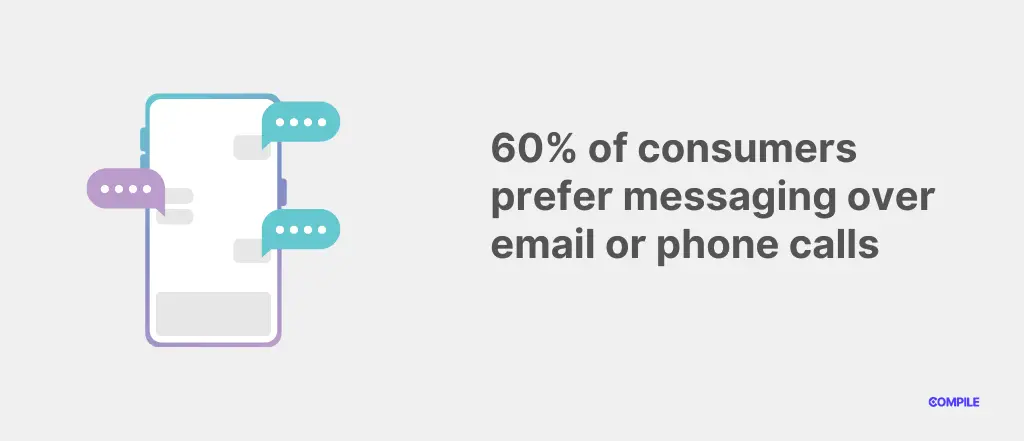
Most marketers report that mobile devices are responsible for more than half of their annual traffic.
67% of mobile users say they’re more likely to buy a company’s product or service if its website is mobile-friendly.
For small businesses, the average SEO budget is around $500 per month.
90% of Internet users encounter paid ads in Google search results.
Paid search ads can increase brand awareness by up to 80%.
65% of small- to medium-sized businesses (SMBs) run PPC campaigns.
People who click on paid search ads are more likely to make purchases than those who click on organic results.
71% of people who have a positive brand interaction on social media will recommend that brand to friends and family.
The majority of social media marketers post multiple times a week.
Personalized ads drive 30% more sales than non-personalized ones.
74% of online marketers said they have used visuals in their content more than 70% of the time.
45% of organizations don’t have a clearly defined digital marketing strategy.
86% of marketers use blogging as part of their marketing strategy.
55% of marketers have blog content as a top priority.

43% of marketers say that the biggest challenge with visual content is producing it consistently.
Using videos on landing pages can increase conversions by over 85%.
Only 22% of businesses are satisfied with their current conversion rates.
75% of marketers say that their social media efforts have resulted in an increase in traffic.
34% of marketers create their own graphics.
Over 70% of Twitter users feel more positively towards a brand after their tweet is answered.
91% of marketing executives list LinkedIn as their top place they find quality content.
Instagram has the second-highest ROI of all social channels for marketers.
Over 30% of marketers say that images are the most important form of content for their business.
Over 50% of consumers want to see more videos from brands that they follow.
Over 80% of marketers use video as a content marketing tool.
A top challenge B2B marketers face is the ability to attract quality leads with content.
People create content with the goals of creating content that boost sales, build relationships with customers, and increase brand awareness.
According to HubSpot, 83% of marketers say it’s better to focus on quality of content, even if it means they post less often.
Because of their content marketing efforts, 58% of B2B marketers reported increased sales and revenue in 2023.
When marketers updated their content, 53% saw an increase in engagement.
83% of marketers found that creating higher quality content less often is far more effective than publishing lower quality content more often.
55% of marketers said that creating more content and posting more frequently helped boost their content rankings.
46% of companies agree that brand consistency is extremely important, while 42% think it’s very important.
It takes 7 seconds for customers to make an impression about a business.
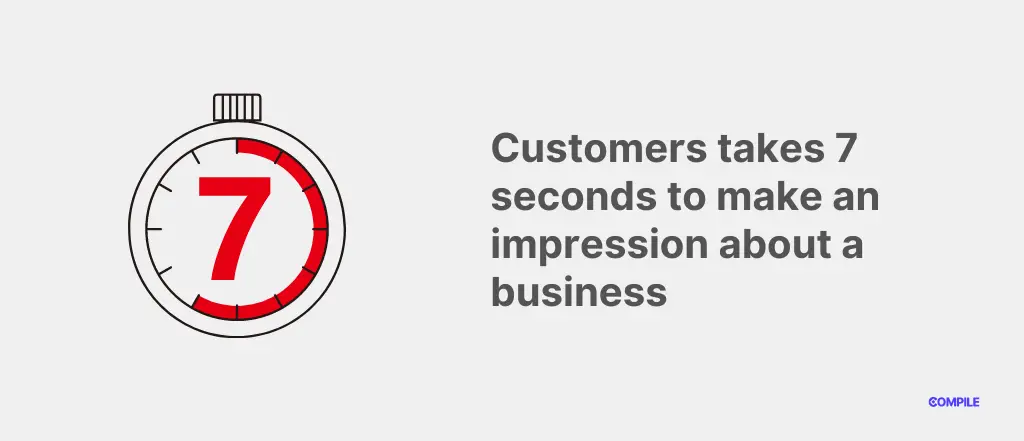
47.1% of registration buttons on high-converting events appear at the top of an event page.
55% of marketers confess that they are failing to extract the full potential of zero and first-party data from their events.
Conclusion
We hope you enjoyed this list of marketing statistics.
We have also compiled the list of following statistics that might be useful for you to explore:
We frequently regularly update this list of statistics. Don’t hesitate to revisit this page later to find the latest data points.
Now I’d like to hear from you:
Which stat from this list surprised you the most? Or have a question?
Either way, please jump in and leave a comment below.
Leave a Reply